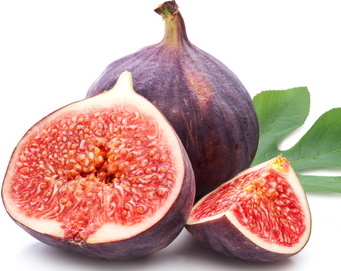
Health Benefits:
Aids in digestion
Aids in weight loss
Anti fungal
Anti viral qualities
Aphrodisiac
Detoxifying effects
Enhances production of breast milk
Improves hair skin and nails
Increases Sex Hormones & Orgasm
Lowers blood pressure
May reduce risk of macular degeneration
May regulate blood sugar
Promotes eye health
Reduces risk of breast cancer
Nutrition:
Serving size: 1 fig; Calories: 37; Fat: .2g; Cholesterol: 0mg; Sodium: 1mg; Carbs: 10g; Fiber: 1.4g; Sugars: 8g; Protein: .4g; Potassium: 3%DV; Vitamin A: 1%DV; Vitamin C: 1%DV; Calcium: 1%DV; Iron: 1%DV
Did You Know?
- Consumption of figs can help improve memory and prevent anemia.
- When applied to the skin, baked figs can help cure inflammations like abscesses and ulcers.
- Because of its high water content, figs can cleanse the skin and prevent or cure acne.
Ways to Eat:
- Dried
- In baked goods
- Chopped in rice
- In oatmeal or cereal
Farming Trivia:
- Figs are one of the oldest cultivated crops
- They are a semi-tropical plant, so they grow easily in areas with long, hot summers.
- The United States is one of the top fig-producing countries in the world, with most of the production in the United States coming out of California and Texas.
- Most popular varieties: Black Mission, Kadota, Calimyrna, Brown Turkey, Adriatic
Note: Always consult a physician for any specific health questions and concerns. Some of this information may be subject to change should there be any new findings from Federal Health Administration (FHA), Food & Drug Administration (FDA), American Medical Association (AMA), American Cancer Society (ACS), and / or other leading food, nutrition and medical advisors.

